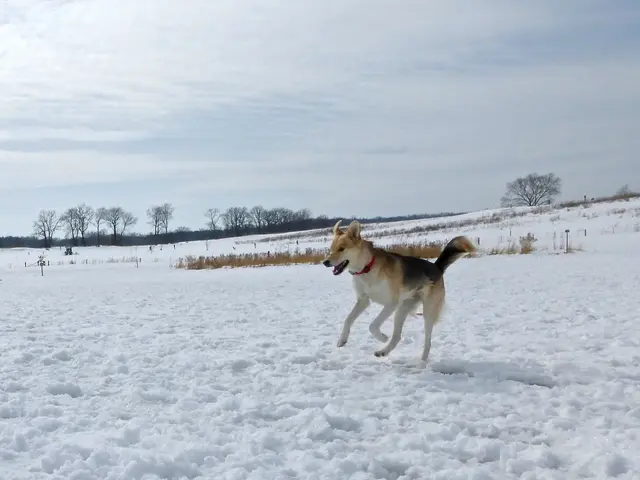Strutting Through Paw-blems: A Guide to Dog Paw Infections
Canine Paw Ailments: Origins, Signs, and Remedies
Paws are a dog's best friend, helping them navigate the world and experience life to the fullest. But even these resilient appendages can fall victim to infections, leading to discomfort and hindering their ability to move freely.
Understanding paw infections is crucial for any dog parent, as prompt recognition and treatment can ensure a swift recovery. Let's put our paws together and delve into the world of canine foot care.
Pawing Through the Pains
Paw infections can be a consequence of various factors, including:
- Trauma: Ranging from minor punctures to deep lacerations, injuries can provide a gateway for microorganisms to invade the paw.
- Allergies: Food, fleas, or environmental allergies can trigger excessive licking and biting, damaging the paw's protective layers and leading to infections.
- Immune Suppression: A compromised immune system can struggle to fight off infections, leaving them more susceptible to developing paw infections.
- Body Type: Certain breeds, such as Greyhounds, with thin paw padding are more prone to paw infections due to their delicate paw structure.
Recognizing Red Flags
Symptoms of paw infections are typically noticeable, including:
- Redness or Swelling: Visible signs of inflammation are common indicators of infection.
- Visible Injury: Obvious injuries, such as cuts or abrasions, can lead to paw infections.
- Pain: Lame or limping behavior, or unwillingness to put weight on a paw, can signal pain or discomfort.
- Discolored Nails: Discoloration can indicate an underlying issue, such as an infection or fungus.
- Foul Odor: A bad odor emanating from the paw may signify an infection.
- Reluctance: Dogs may become hesitant to allow their paws to be touched due to pain or discomfort.
- Discharge or Excessive Grooming: Greasy or discolored paw discharge or excessive licking and biting at the paws can indicate an infection.
Time to Consult the Vet
If you suspect your dog might be dealing with a paw infection, it's essential to consult a veterinarian for a comprehensive examination. During the consultation, share your observations and any relevant information about your dog's symptoms, health history, and recent activities. Remember, knowing your dog's normal paw appearance will help you notice unusual changes more easily.
Your veterinarian will evaluate your dog's paws, perform diagnostic tests, and provide appropriate treatment options based on the underlying cause and the infection's severity and duration. Treatment may involve topical or oral medications, pain relief, and paw cleaning and bandaging.
Walking the Path to Prevention
While preventing paw infections entirely might be challenging, it's certainly possible to minimize the risks:
- Regular Grooming: Regularly trim your dog's nails to prevent overgrowth and potential injury to the paw pad.
- Booties: Opt for paw protection, such as booties, during outdoor adventures to shield your dog's paws from harmful debris.
- Foot Inspections: Regularly inspect your dog's paws, especially after outdoor activities, to catch any abnormalities early.
- Post-Walk Care: Clean and dry your dog's paws after walks or outdoor play sessions to remove potential contaminants.
- Allergy Management: Manage any allergies your dog may have to reduce itching and inflammation, which can otherwise lead to paw infections.
- Pest Prevention: Maintaining year-round flea and tick prevention will help keep your dog safe from itchy bites that could lead to paw infections.
With these tips and a watchful eye, you can help your dog maintain healthy, happy paws and avoid the discomfort of paw infections. Just remember, when in doubt, consult a veterinarian to ensure your dog receives the best care possible.
- Incorporating a routine of skin-care for yourself might involve regular grooming, similar to trimming your dog's nails to prevent overgrowth and potential injury, promoting overall health-and-wellness.
- The importance of mental-health extends beyond humans; just as a dog parent should be mindful of paw infections, pet-owners should also recognize signs of anxiety or stress in their pets and take steps to alleviate it, ensuring a happier lifestyle.
- While researching about dog paw infections, I found connections between certain breeds, such as Greyhounds, and their susceptibility to paw infections due to their thin paw padding. This made me question whether similar considerations are necessary for skin-care products for pets, taking into account their unique physical characteristics for optimal health.








